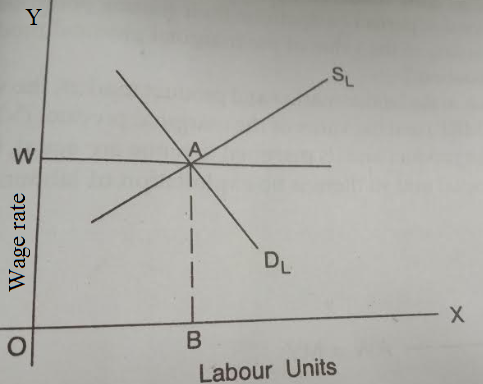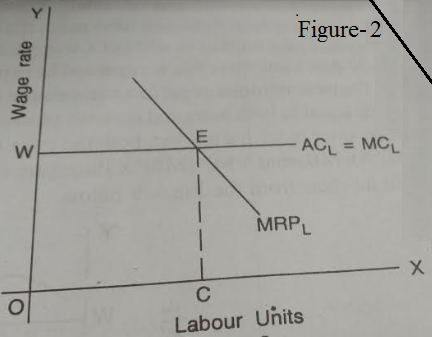WAGE DETERMINATION UNDER MONOPOLY
Here, we understand how wage rate is determined under monopoly in detail with figure.

Do you have similar website/ Product?
Show in this page just for only
$2 (for a month)

0/60
0/180
WAGE DETERMINATION UNDER MONOPOLY
Before we discuss about Wage determination under monopoly, first of all we understand what is wage rate and monopoly.
What is Wage rate?
Wage rate is the price paid to the labourer for the services rendered by him in production process. It includes all payments made to labour. In other words, "a wage may be defined as sum of money paid under any contract by an employer to worker for services rendered."
What is Monopoly?
Monopoly can be defined as market in which there is only one producer/seller of a product which has no close substitutes. A monopolist is a single, sole, producer with a power to fix the price of his product. Unlike the competitive firm, a monopolist is not a price - taker, but considered as a price maker.
Now, we will discuss in detail how wage rate is determined under monopoly.
We need to understand - Monopoly in the product Market and Perfect Competition in the Labour Market.
- Monopoly in the product Market: Let us consider, a firm is a monopolist in the product market but there is perfect competition in the labour market. As the firm having monopolistic power in the product market, the demand curve for the product will be downward sloping and marginal revenue will be less than price at all levels of output. It indicates, the demand curve for labour of an individual firm will not be value of marginal product curve (VMPL) but the marginal revenue product curve (MRPL). There is perfect competition in labour market, the supply of labour to an individual firm is perfectly elastic. As shown in figure,MRPL is the demand curve for an individual firm while SL is the supply curve of labour to the individual firm. Here, the firm aims at maximum profit, it will employ OA units of labour because at this level point of employment of labour, marginal cost of labour that is AB is equal to marginal revenue product of labour at point B. Here, it clearly indicates that the wage rate being equal to marginal cost of labour also equals marginal revenue product of labour. The firm attains equilibrium at point B.
- Perfect Competition in Labour Market: We know that perfect competition in the labour market, where the market demand curve for labour is obtained by adding up the demand curves of all firms. The market demand curve for labour, the demand curves of individual firms, will be downward sloping. As supply curve of labour for an industry is concerned, it shows to be upward sloping. It indicates that in the labour market, wage rate will be determined by the intersection between demand and supply curves.
As shown in above figure-1, DL indicates industry demand curve for labour and SL industry supply curve of labour. Both cures intersect at point A. That equilibrium wage rate is OW and equilibrium level of employment in industry is OB.
Here, it clearly indicates there is perfect competition in the labour market, the equilibrium wage rate that is OW determined by industry is accepted by all individual firms. Means the supply curve of labour for an individual firm as shown in figure-2 shown horizontal straight line passing through w. In this situation, marginal cost of labour equals average cost of labour for the firm (ACL = MCL).
Figure-2
The demand curve for labour for the firm as shown in figure-2 is marginal revenue product curve of labour that is MRPL. The two curves intersect at point E. It means the firm employs X units of labour. E clearly indicates equilibrium point for the firm.
CONTINUE READING
Wage determination under Monopoly
Monopoly in product market
Firm
Product Market
Labour market
Marginal revenue product curve
Value of marginal product curve
Perfect Competition in the Labour Market.
Wages - Wage determination under Monopoly.
Kinnari
Tech writer at NewsandStory
